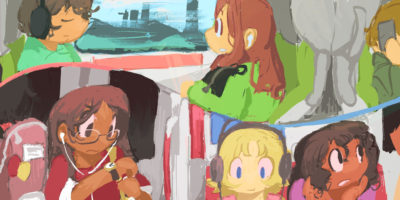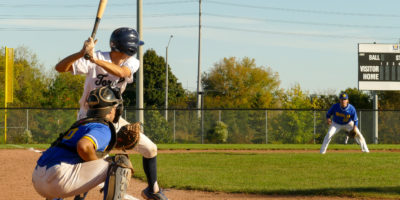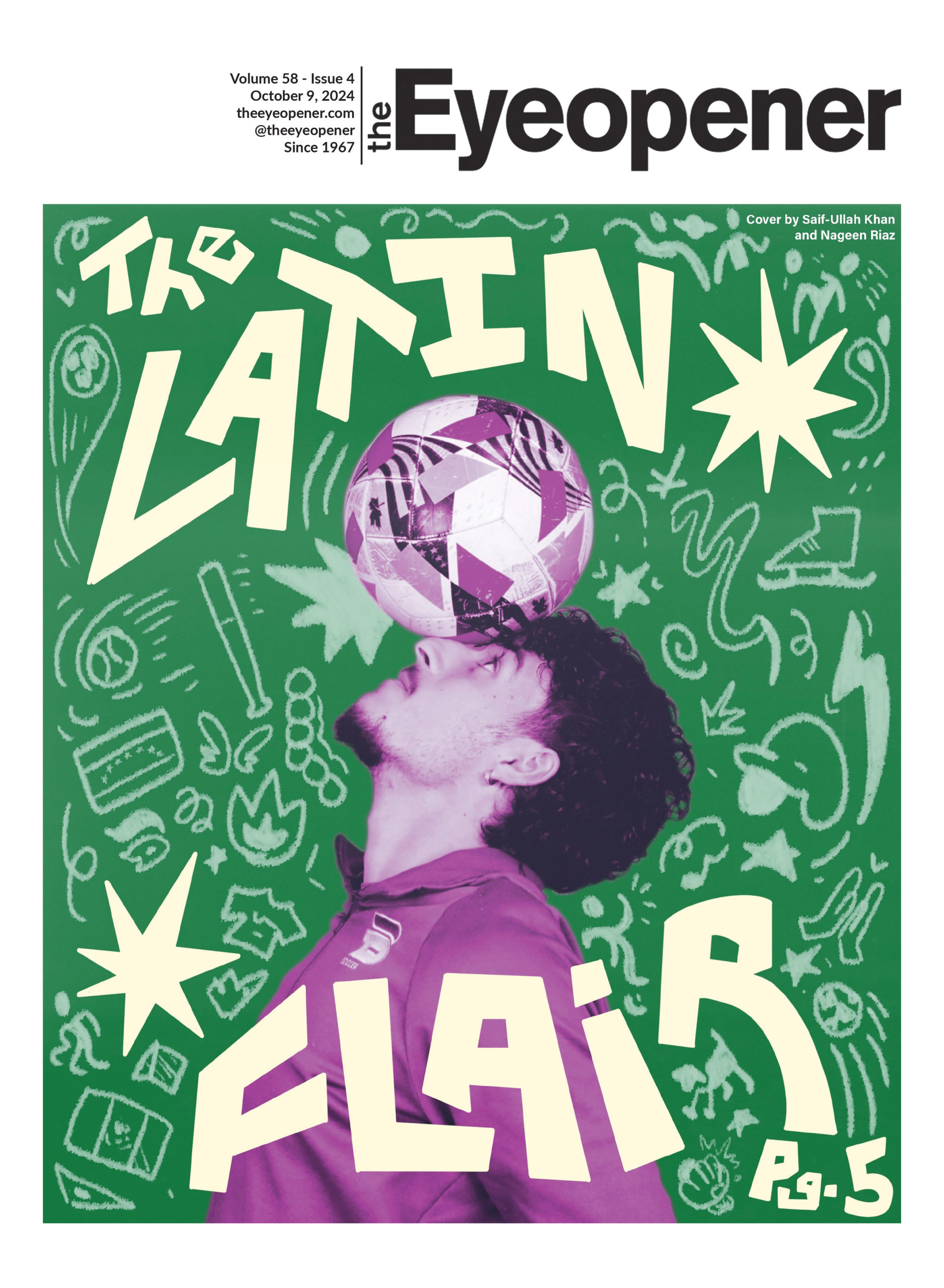By Charlize Alcaraz
Nina-Marie Lister, a professor at Ryerson’s School of Urban and Regional Planning, says she doesn’t really believe in the idea of weeds. What she does believe in is Toronto’s vision of biodiversity in the city—but she says that the city’s by-law on grass and weeds contradicts that.
On Aug. 20, city staff delivered a notice to Lister stating that her property is not maintained according to the city’s bylaw, the Globe and Mail reported.
The municipal bylaw states that grass and weeds must be cut when they exceed 20 centimetres in height. Lister explains that since weeds aren’t defined scientifically, people can label any plant they don’t like as a “weed.”
“The reality is that bylaw officers are issuing tickets to people based on how a plant looks…but imagine if we did that with people? Imagine if an officer arrested them based on how they look,” said Lister. “Oh wait, we do that. It’s called racism.”
Lister is also the founder and director of Ryerson’s Ecological Design Lab. Her work at the university involves researching what makes biodiversity successful and effective, and her work as the principal of Plandform, an urban planning studio, puts her research into practice.
She points out that the city of Toronto’s vision of biodiversity doesn’t extend to allowing people to create a biodiverse landscape in their own residential gardens.
“On one hand, the city of Toronto is writing these really progressive policies on biodiversity protection, pollinator plans, ravine strategy and forest management…but they also have laws at the property level that are kind of outdated,” said Lister.
According to the city of Toronto’s website, biodiversity refers to the variety of all living things “and the ways in which they interact with each other at an ecosystem level, species level and genetic level.”
The website also notes that biodiversity is crucial for a healthy environment and fundamentally supports the livability and sustainability of the city. However, Toronto’s municipal code on grass and weeds confines the abilities of people that want to be more diverse and sustain life in their naturalized gardens.
“A backyard with a big lawn is like a classroom for colonialism and environmental hostility”
Challenging the Western and colonial practices of setting standards for gardens
When driving by any suburban neighbourhood, it’s clear that the Western standard for gardening is a short-clipped, bright green lawn. Lister said this is a colonial practice in modern time and doesn’t respect Indigenous practices for medicinal plants or new Canadians who come with their own botanical practices that originate from their own cultures.
In an interview with the Globe and Mail, history professor John Douglas says that “manicured lawns” is a demonstration of wealth that originates from European traditions.
“I can reorganize this landscape, flatten it, plant lawn, find a non-indigenous species of plant, of grass, and completely extract anything that’s not homogenous, that doesn’t fit with this green pattern and control it… A backyard with a big lawn is like a classroom for colonialism and environmental hostility,” Douglas said.
“They have their own ideas of gardening and one of them could be growing food in their front yard because…maybe they need to provide food security for themselves or maybe they have had trauma in their past life and they find pleasure sitting among plants in their garden,” said Lister.
“Either way, who are we to tell them that the only viable garden is a short-clip lawn?”
She also adds that there is good reason for the prohibition of having noxious weeds––plants that can cause harm to people and animals––in people’s private properties, but they should be named and shown to people so they know what to look out for.
The city offers a free application for a natural garden exemption that allows people to have their natural garden be considered for a permit; despite that, your garden can’t contain “overgrown plants or invasive weeds.”
Expressing yourself through your gardening is a Charter right
In 1996, Sandra Elizabeth Bell appealed her conviction of not complying with Toronto’s bylaw that prohibited “wild” or naturalized gardens. She was fined $50 for refusing to cut the weeds and grass in her yard which an inspector labeled as “excessive.”
Bell testified that her garden is a reflection of her own environmental beliefs and that it encouraged a biodiverse ecosystem that had many benefits, namely: creating a green corridor for migrating birds and butterflies and eliminating the need for harmful pesticides that contaminated the water supply.
The Ontario Court of Justice found that the bylaw was invalid because it “unjustifiably violated the freedom of expression guaranteed by the Charter.” They also found that the bylaw was an “unauthorized regulation of aesthetics or visual appearance of properties, rather than any legitimate health or safety concern.”
Lister argues that the city should draft a model bylaw which clearly defines the standards for residential gardens regarding health and safety.
“The court has told us that it’s your right to garden in whatever aesthetic you like. However, if you can define some parameters around health and safety––for example, not allowing noxious plants in your yard––you can define those plants scientifically and put that in the by-law,” said Lister.
“By confining the bylaw that way, they can leave the door open to people that can actually help the city…I don’t think the solution is to throw out the bylaw, but I think it’s to rewrite it to become more contemporary and more respectful.”
No yard? No problem
The average person can help protect biodiversity in an urban city even from their own apartment balcony.
Lister advised that people can plant native species that attract birds, butterflies and hummingbirds to help with pollination and sustaining a native habitat even on a tiny little patch of garden.
Toronto Urban Growers has a guide on introductory balcony growing that lists what you might need to start out.
There are also local nurseries in Toronto that give away free plants for people to take home and nurture on community environment days.
She tells students that even if they’re renters and don’t own property yet, they can do this on their own balcony and help out in small ways that can bring them a lot of joy.










Michael Stangl
Great to read the article for lawn biodiversity in Toronto.
I’m a Regenerative Lawn care company here in Niagara building soil health for greater mental and physical well being. As you know, consumers are visually based and lawn care is an ego based industry.
I started in chemical lawn care back in 1981 and as of 2014 went chemical free. I felt in 2009, the ban did not go far enough to include fertilizer. The most over used chemical today as always is based on visual outcome. Nothing else. It does not build soil health but the opposite.
The weeds are but succession from anaerobic to aerobic conditions. They improve soil health. Not as we are taught, told or marketed by those who sell.
Our home builders need to be brought into the conversation since they know so much about building and nothing about soil health. They take the outside for granted and expect as do homeowners, fertilizer and sprays are the remedy. Yet we know it is the opposite.
As years of use on the farm, paddock, lawn, sport, lawn to vegetable patch add up as a cumulative cocktail that arise as an illness or cancer. They lack the understanding that what we do to our soil affects all life.
I support all those who know diversity is needed for a healthier planet and us.
I am here if you ever need me.